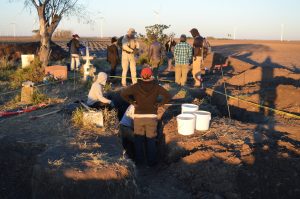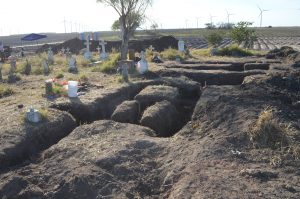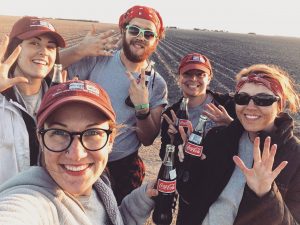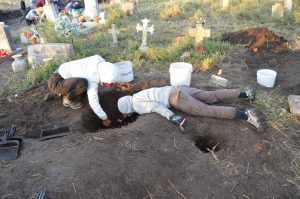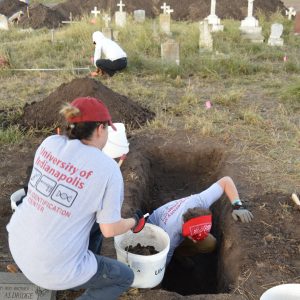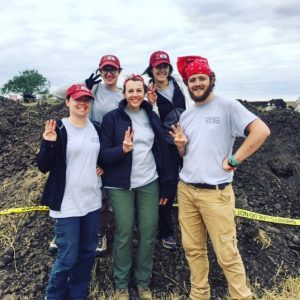After arriving home in Indiana, the same bittersweet feeling always seems to settle in my chest. You have this feeling of accomplishment but at the same time you think about the work that still lays ahead and the accomplishment feeling dissipates and anxiety sets in. I use the word anxiety in a non-negative way, I use the word anxiety because I am anxious to keep going. I hate having to wait for another field season in order to continue participating in this humanitarian effort. This is such an amazing experience to be a part of and each field season I come away feeling that I’m actually helping.
This field season was different from all the others. Although each field season was unique in its own way. Some of the challenges I faced were more weather related than some of the difficulties I had faced in Rio Grande City and Falfurrias. The cemetery that we were working in was located in the middle of an open field with no protection from the wind. The wind would be calm in the morning when we would start our day but in the afternoon there would be wind gusts of up to 20-30 mph. This would cause dirt to blow into our faces and make shoveling nearly impossible. We would come home in the evenings with our faces covered in a layer of dirt. Although this made shoveling and moving dirt harder than it needed to be, we were still able to persevere and get a lot of work done.
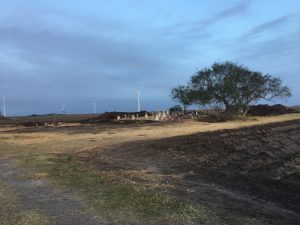
This field season was supposed to be an ‘easy’ one because we were told where we could find unidentified migrants. What we didn’t know was that the unidentified migrants were also buried amongst people who were identified but had no grave marker. This made our job more challenging because we had to make sure the individuals we were recovering to take back to Texas State University were unidentified migrants and not positively identified individuals. Thankfully, the persons who were identified had paperwork with them stating that they were identified. If they were identified, then we would not remove them and at the end of the field season gave them a grave marker. One thing that meant the most to me was being able to place flowers at each grave marker. We may not know who these people were but it is important to me and to our group for them to know that they are loved.
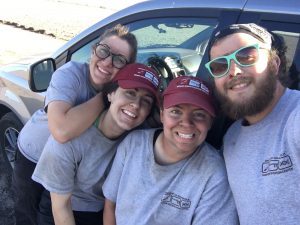
This field season could not have been accomplished without our amazing team members along with the amazing Texas State University team. This was my first time working in the field with some of the UIndy group and I was pleasantly surprised at how well we worked together. Our group communicated so well in the field which is probably one of the more important things to have when working in a group setting. I loved how in the evenings we could plan how we were going to tackle our quadrant the next day and then execute that plan without a hitch. This was a really spectacular group that we had this field season; honestly, I’ve never been to Texas without an excellent group to work with so I hope this trend continues.
